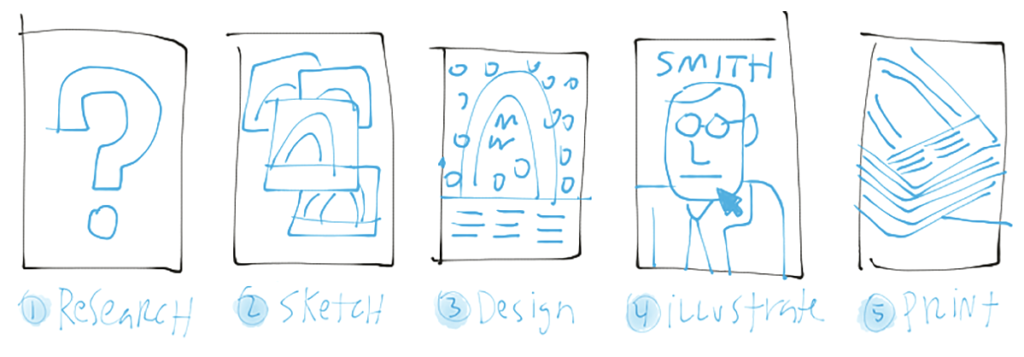From start to finish—designing a poster to celebrate The Gateway Arch’s 50th birthday
This year marks the 50th anniversary of the “topping out” of Saint Louis’s incredible Gateway Arch.
On a warm, sunny day in October 1965, a custom-built climbing derrick placed a final 10-ton triangle of stainless steel at the top of a huge, shining arch. The builders had to have the St. Louis Fire Department hose down the unlikely structure with cool water—it had expanded five inches in the heat and the last piece wouldn’t fit, apparently confirming many skeptics’ warnings that the entire project was doomed to fail.
But, with cold water coaxing the hot steel to shrink back and 450 tons of pressure from a hydraulic jack cranking the north and the south legs apart, three decades of competition, controversy, and construction met 630 feet above the Mississippi River, and became The Gateway Arch.
Today many St. Louisans probably take Eero Saarinen‘s Arch, opened to the public in 1967, for granted. We see it every day. Even some visitors and tourists are unimpressed when they hear the same tired and time-worn trivia: the Arch is 630 feet tall. It’s made of stainless steel. It’s a tribute to America’s westward expansion. Those facts barely touch the surface. Compared to the monument itself they’re practically boring. There’s so much more to this Arch.
So last year we decided to celebrate its 50th birthday with a poster. A poster that balanced the Arch’s simple and iconic form with a density of both important and lesser-known facts. A poster that told a complete and very visual story: why the Arch exists, what its original shape looked like, what and who was there before it, who built it, how much it weighs, what kind of arch it is (mathematically speaking), how it remains standing, who’s jumped off it, and even what would happen to it if left neglected for 5,000 years. A poster that’s all those things and much more.
When you visit the Gateway Arch and walk up to its broad metal base, you can’t help but be struck by just how huge it is, and by how incredibly solid it looks. It’s as if it had always been there, and some days it seems like you could sit and stare at it for just as long. But then you get to go inside it. You get to see some of what’s under the skin and behind the scenes.
And that’s just what we’re going to do here over the next couple months—go inside the making of an informational poster and give a peek into our process, from the bottom to the top.
- How do you go from idea to inventory?
- From pencil sketch to printed poster?
- From architecture to artwork?
- We’ll see starting next month!
Update: here are links to the posts…
